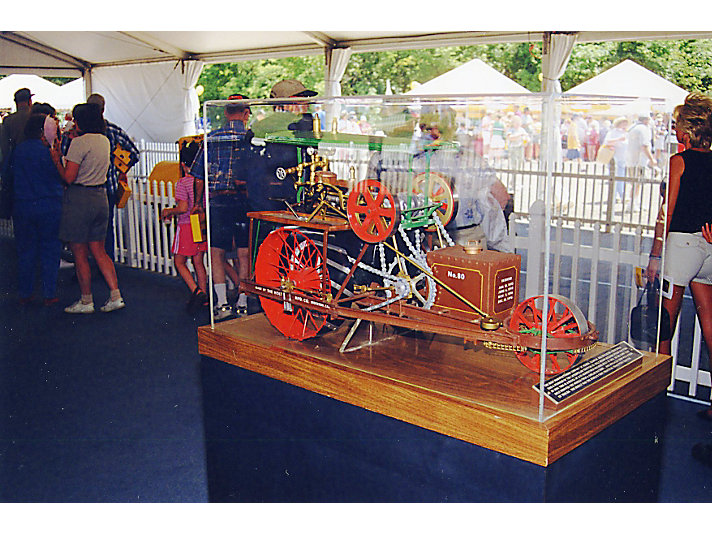Photo: Caterpillar Heritage Website
About Caterpillar
Caterpillar designs, manufactures and markets heavy machinery and power systems used in large construction projects around the world. The company is headquartered in Peoria, Illinois and has over 114,000 employees around the world. Caterpillar’s machinery has been used in small and large construction projects worldwide for over a century, dating back to the expansion of the San Francisco cable car system in 1905 and the cleanup after the San Francisco earthquake the following year. The company has four major business segments: Construction Industries, Energy & Power Systems, Financial Products & Consumer Services, and Resource Industries.
The Construction Industries segment manufactures and markets heavy machinery, including backhoe loaders, track-type tractors, multi-terrain loaders, motor graders, etc., around the world. Roughly 40% of the segment’s sales come from North America, 25% from the Asia-Pacific region, 20% from Europe, Africa and the Middle East (EAME), and the remainder from Latin America.
The Energy & Power Systems segment manufactures and markets turbines, reciprocating engines and related systems for oil & gas, marine, rail, and power generation applications. Sales are distributed geographically as follows: 40% from North America, 30% from EAME, 20% from the Asia-Pacific region, and roughly 10% from Latin America.
The Financial Products & Customer Services segment provides financing for the purchase and lease of Caterpillar equipment. More than half of the segment’s sales come from North America, with the remaining sales roughly split equally among the Asia-Pacific, EAME and Latin America regions.
The Resource Industries segment is responsible for supporting customers with heavy machinery products used in the mining and quarrying industries. North America provides roughly a third of sales, the Asia-Pacific and EAME regions each provide roughly 25% of segment sales, and Latin America provides roughly 20% of sales.
The company states that its strategy is to provide investors a total return that is in the top 25% of all S&P 500 companies. To Caterpillar, this implies a total shareholder return of at least 15% annually.
The company is a member of the S&P 500 index and the Dow Jones Industrial Index. Caterpillar is also a member of S&P’s High Yield Dividend Aristocrats index and trades under the ticker symbol CAT.
As a member of the S&P 500, once Caterpillar has increased dividends for 25 consecutive years S&P will classify the company as an S&P Dividend Aristocrat. Given that Caterpillar has made a conscious effort to increase the dividend each year for 22 years straight, I expect them to continue to do so. This would put them on track to become a Dividend Aristocrat in 2018.
Caterpillar’s Dividend and Stock Split History
Caterpillar has paid quarterly dividends since 1933 and has increased dividends annually since 1994. Caterpillar has traditionally announced dividend increases in mid-June with the stock going ex-dividend in mid-July. Being highly dependent on global economic expansion, the company’s business is cyclical, as are the dividend increases.
Caterpillar has compounded its payout at an average rate of 9.6% over the last 5 years and 8.9% over the last 10 years.
Caterpillar has split its stock multiple times over the life of the company. Since beginning its record of dividend increases, Caterpillar has split its stock 2-for-1 three times: in August 1994, June 1997 and, most recently in June 2005.
Caterpillar’s Direct Purchase and Dividend Reinvestment Plans
Caterpillar has both direct purchase and dividend reinvestment plans. There are several fees associated with both plans. When you first open up an account, you’ll pay an initial fee of $15. When you purchase Caterpillar shares from the plan, you’ll pay a fee of $1 for a purchase by bank debit or $2.50 for a purchase by check, plus 3 cents per share purchased. When opening an account, you must purchase a minimum of $250 in shares, either in a single purchase or through 10 monthly purchases of $25 each.
When you reinvest your dividends, Caterpillar pays all the transaction and per share fees if you own less than 200 shares of stock. Otherwise, you’ll pay a transaction fee of 5% of the reinvested amount, up to $3, plus a 3-cent per share fee.
Finally, when you go to sell your shares, you’ll pay a fee of 12 cents per share sold plus a transaction fee of either $15 (for a batch sell order) or $25 (for all other types of sell orders). If you place your sell order with a customer service representative on the phone, you’ll also pay an additional $15 fee.
Helpful Links
Caterpillar’s Investor Relations Website
Current quote and financial summary for Caterpillar (finviz.com)
Information on the direct purchase and dividend reinvestment plans for CAT
